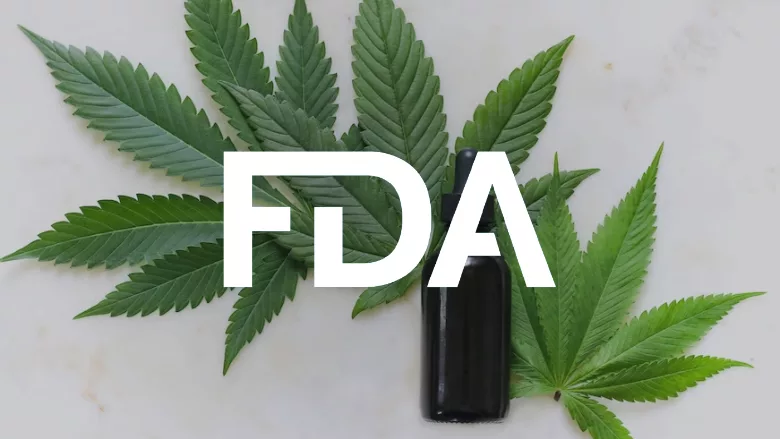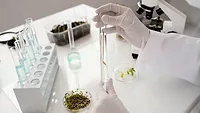FDA Updates on Chemical Safety Reassessment Work, Reveals Substances of Agency’s Focus

Image credit: Kimzy Nanney via Unsplash
Following a May 2023 announcement of a new framework for systematic post-market reassessment for chemicals used in foods, the U.S. Food and Drug Administration (FDA) has released a public inventory of certain food ingredients and additives determined to have unsafe uses in food because they are unapproved, as well as lists of select chemicals currently under the agency’s review. FDA also shared insights about the agency’s work to enhance the assessment of ingredients in foods on the market.
In addition to FDA’s pre-market programs, the agency uses active post-market monitoring of new safety information related to food ingredients to ensure the safety of the U.S. food supply. Under the Federal Food, Drug, and Cosmetic Act (FFDC), any ingredient used or intended for use in food must be authorized by FDA for use as a food additive, unless that use is deemed Generally Recognized as Safe (GRAS) or meets a listed exception to the food additive definition in FFDC. An unapproved food additive is deemed to be unsafe under FFDC.
The recently published inventory includes some of FDA’s post-market assessments of food ingredients and may include links to activities related to these ingredients since 2004. When FDA becomes aware of an ingredient for which there is no authorization as a food additive, the agency will review the regulatory status of the ingredient, including whether publicly available data and information show its use is safe and meets the GRAS standard. This determination informs the agency’s actions to protect public health, including enforcement actions and other post-market activities that warn manufacturers and the public of unsafe food additives, and can result in the removal of unsafe products from the market.
As of July 12, 2023, the inventory of substances that are not considered GRAS includes:
- 4-androstenedione
- Arimistane
- Caffeinated alcoholic beverages
- Cannabidiol (CBD)
- Delta-8 tetrahydrocannabinol (Delta-8 THC)
- 1,3-dimethylamylamine (1,3-DMAA)
- Ginkgo biloba
- Kava
- Melatonin
- Partially hydrogenated oils (PHOs)
- Picamilon.
The inventory is not intended to be a complete list of food ingredients that may be unlawful if used in food and may not include all post-market activities the agency has taken with respect to unsafe food additives. The inventory includes the names of unsafe food additives, information about some post-market activities and public communications, and FDA’s memos that describe reviews in which the agency concluded the use of the ingredient did not meet the GRAS standard. The post-market activities include warning letters, import alerts, seizures, and injunctions.
The lists of select chemicals that were also made available include ingredients considered GRAS, food and color additives, food contact substances, and contaminants currently under FDA review. The lists represent some of the agency’s chemicals of interest and those that are of high interest among stakeholders who have asked FDA to review their safety. There are two lists, as follows:
The list of select food ingredients and food contact substances currently under FDA review (as of July 12, 2023):
- Certain authorized short-chain per- and polyfluoroalkyl substances (PFAS)
- Certain authorized uses of other PFAS in food contact applications
- Bisphenol A (BPA)
- Brominated vegetable oil (BVO)
- Flourinated high-density polyethylene (HDPE)
- Irgafos 168
- Tris (2,4-ditert-butylphenyl) phosphite
- Partially hydrogenated oil (PHO)
- Phthalates
- Red dye 3
- Titanium dioxide.
The list of select contaminants currently under FDA review (as of July 12, 2023):
- Arsenic
- Cadmium
- Lead
- 4-MEI Methylimidazole
- Mercury
- 3-Monochloropropane-1,2-diol (MCPD) esters and Glycidyl Esters (GE)
- PFAS
- Thallium.
FDA anticipates updating the inventory and lists periodically.
Developing Framework for Systematic Review of Food Ingredients and Contact Substances
Alongside the release of the inventory and lists, Kristi Muldoon-Jacobs, Ph.D., Acting Director of the Office of Food Additive Safety (OFAS), also shared insight into FDA’s envisioned framework for systematically monitoring and reviewing the safety of food ingredients and food contact substances. FDA intends to develop a framework in which the agency would detect signals that could trigger assessment through routine surveillance of information, then verify and prioritize signals based on an initial evaluation of potential risks.
Looking for quick answers on food safety topics?
Try Ask FSM, our new smart AI search tool.
Ask FSM →
FDA would use new tools and data in toxicology, exposure assessment and modeling, prioritization, and assessment, some of which has already been created. Some tools FDA would like to use for safety testing are New Approach Methods (NAMs), which are new biological and exposure methods intended to reduce, refine, or replace animals in the evaluation of the safety of a chemical, including ingredients added to food. This information will contribute to updated risk assessments. As part of the new framework, FDA expects to publish information or propose regulatory action, incorporate processes to seek public comment, and conduct additional outreach to garner stakeholder feedback.
At present, FDA is in the early stages of developing new criteria for risk prioritization, which would inform how the agency manages information that signals a possible new safety issue based on the initial review of its risks, including whether to take immediate action, monitor for additional information, or add to a list of substances that would be systematically reassessed for safety. Through the risk prioritization framework, FDA could triage ingredients and food contact substances more efficiently when made aware of new and relevant science. Such prioritization would enable FDA to preserve its resources by not expending them on ingredients supported by science as safe, regardless of their length of time on the market.
Dr. Muldoon-Jacobs stressed the agency’s need for adequate resources and authorities to make the envisioned enhanced framework a reality. The agency is exploring how to obtain better information on the post-market use of food ingredients from industry and other stakeholders, as manufacturers are not required to submit post-market use information under FDA’s current authorities.








